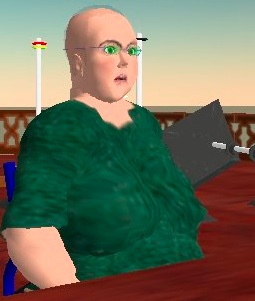Autism and Computer Communication
For some autistic people, who do manage to learn to read and write, communication using a computer keyboard or reception using a visual document, either displayed on a computer screen or printed up, could be easier than verbal communication or reception, especially due to the marked preference shown by a high number of autistic people for visual stimuli but also because of the permanence of visual stimuli compared with the transitory nature of auditory stimuli. However, great care is called for in this area in view of certain overly optimistic views linked to the use of a technique known as "Facilitated Communication" [1].
In My Language. 8 mins 35 sec, 2007. Amanda Baggs
Summary: Amanda baggs is a young woman with autism who has created a powerful and articulate video that translates from the world of environmental interacting to the neurotylic form of speech and perception. As well as a stunning view into how she experiences andmakes sense or the world, it's also a forceful philosophical argument concerning how the mainstream usersyanfs people who don't think or communicate in a conventional way. Preesumably speech-less (either through choice or development), Baggs communicates to the viewer using a voice synthesizer and on-screen text. Her video provides a profound and exciting insight into an alternative humanity.
Baggs describes the work like this: "The first part is in my "native language," and then the second part provides a translation of Bagg's thoughts towards what constitutes thought, intelligence( personhood, language, and communication, and what does not.
"She types 120 words a minute, which the DynaVox then translates into a synthesized female voice that sounds like a deadpan British schoolteacher" [2].
"No one helped her shoot the video, edit it, and upload it to YouTube. She used a Sony Cybershot DSC-T1, a digital camera that can record up to 90 seconds of video (she has since upgraded). She then patched the footage together using the editing programs RAD Video Tools, VirtualDub, and DivXLand Media Subtitler" [3].

